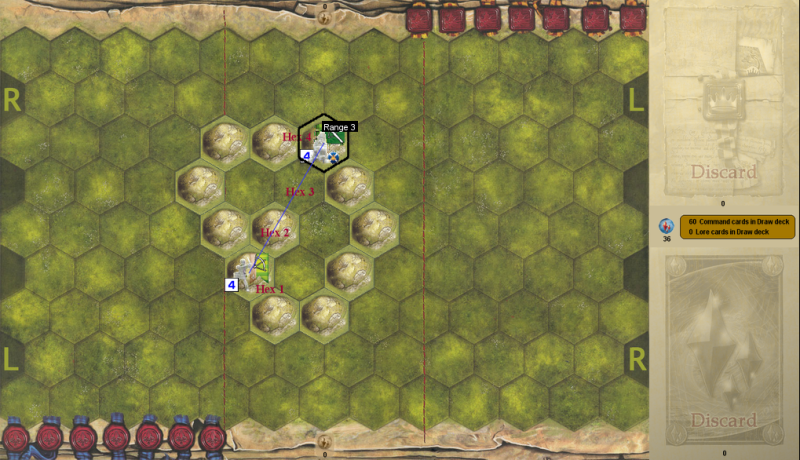Hi all,
I just had my first game despite owning the Battlelore game for several years. It was fun! But now I have some questions. Do you agree with my rule interpretation in 2) and 3) below? And can anyone answer the question in 3)?
1) (Line of sight). As I read the rules, if you are in a hex with terrain that blocks line of sight, you can't use ranged attacks from that hex (since the imaginary line from the center of the firing hex to the center of the target hex intercepts the firing hex, and the firing hex contains an obstruction). Hence you can't use ranged combat from Wooded Terrain (fair enough), but also not from Ramparts or Strongholds. Can this really be true? It would mean, for example, that the Standard Banner archers on the Ramparts in the "Assaulting the Tourelles" battle can't fire, but can be fired upon (since the terrain in the target hex doesn't matter).
2) (Line of sight). You can use ranged attacks out of an Elevated Terrain hex, since Elevated Terrain does not block line of sight from "contiguous Elevated Terrain hexes of the same height", and the hex itself is such a hex. Hence you can stand arbitrarily deep inside a clump of Elevated Hexes and fire into the surrounding lowland (since the surrounding Elevated Terrain hexes do not block line of sight from your viewpoint), but archers in the surrounding lowland can only fire at you if you on the outermost Elevated Terrain hex of the clump (since the terrain in the target hex doesn't matter, and there then is no Elevated Terrain between them and you). This contradicts example B and D from the "Official Battlelore Line of Sight Examples" that found on the net (I don't know how official they are). Also, in those examples the wording "units have LoS" is used, insinuating that line of sight is a symmetric relation, i.e. that if A has LoS to B, then B has LoS to A. The example of a unit in a Wooded Terrain hex bordering some Countryside Terrain shows that is is not the case: these archers can't shoot out of the forest, but they can be shot at.
3) (Empty hex). In my rule book on p. 66 about Loremaster' Landmarks it says that "Each Landmark must be place on an Empty hex", Empty even with capital E as if it was a name, but I can't find the definition of "Empty hex". Does Empty hex mean Countryside Terrain, or could it be for example Wooded Terrain unoccupied by any units?


 I truly want everyone to be playing by the same rules (unless, of course, one intentionally wants to play by different rules
I truly want everyone to be playing by the same rules (unless, of course, one intentionally wants to play by different rules